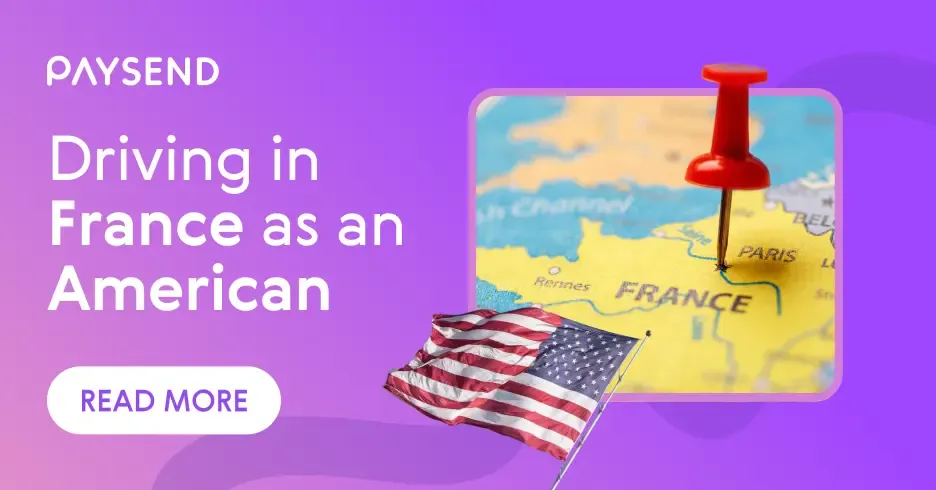Driving in France as an American

Planning a road trip through France? Driving in France as an American is a great way to explore charming villages, coastal routes, and wine country at your own pace. In this blog, you’ll find out what documents you need, how driving in France compares to the US, and what to know if you’re renting a car during your stay.
Do Americans Need an International Driving Permit in France?
Yes. If you’re visiting France as a tourist, you can drive using your valid US driver’s license along with an International Driving Permit (IDP). The IDP is a translation of your US license and is required by French authorities to legally drive. You can get one easily through AAA before traveling.
Documents Required for Driving in France
Essential documents include your US driver’s license, your IDP, passport, car registration papers, and proof of insurance. Failure to carry these can result in fines if stopped by the police.
Driving in France vs the US: Key Differences
In France, you drive on the right side of the road, just like in the US. However, speed limits are in kilometers per hour (e.g., 130 km/h on motorways). Many highways have toll booths (péages), so keep euros or a card ready. Drink-driving laws are stricter in France, with a blood alcohol limit of 0.05%, compared to 0.08% in most US states. Roundabouts are common, and drivers often need to give priority to the right in city streets, whereas US roads usually have clearer yield signage.
Renting a Car in France as an American
If you’re renting a car, the minimum age is usually 21, but drivers under 25 may face additional fees. You’ll need your US license, IDP, passport, and a credit card in the driver’s name. Basic insurance is typically included, but check the deductible amount. Fuel options include diesel and petrol, so confirm which your rental uses before filling up.
Tips for Driving in France
Book automatic cars in advance since manual transmissions are more common. Check your planned route for toll roads. Understand road signs such as “Rappel” (speed limit reminder) and “Sortie” (exit). Watch for speed cameras, especially near villages. For parking, blue zones require a parking disc, so check local rules to avoid fines.
Driving in France as an American is straightforward when you’re prepared with the correct documents and know the road rules. Whether you’re exploring Provence, Normandy’s coast, or the French Alps, a road trip lets you see more and travel on your own schedule.
Need to send money to France? From paying property deposits to supporting family abroad, Paysend offers fast, secure transfers with competitive exchange rates and no hidden fees.
The educational materials on this site are provided for informational purposes only and do not reflect the opinions of Central Bank of Kansas City, Member FDIC. Educational materials may contain links to content on third-party websites which are provided for your convenience; please note that linked sites may have a privacy and security policy different from our own, and we cannot attest to the accuracy of information. The Central Bank of Kansas City does not guarantee nor expressly endorse any particular business, product, service, or third-party content.
Derniers messages

Planning a road trip through France? Driving in France as an American is a great way to explore charming villages, coastal routes, and wine country at your own pace. In this blog, you’ll find out what documents you need, how driving in France compares to the US, and what to know if you’re renting a car during your stay.

If you’ve ever dreamed of owning a lakeside cabin in Ontario or a condo in downtown Toronto, you’re not alone. But can Americans buy property in Canada? The short answer is: yes, they can, but there are stipulations. Here’s everything you need to know about buying Canadian property as a US citizen.













